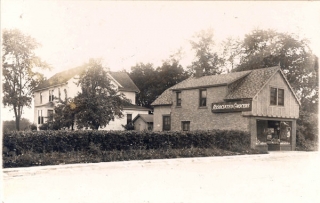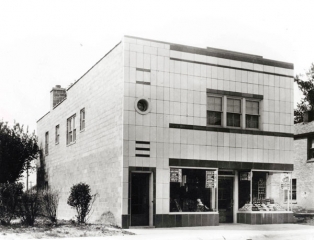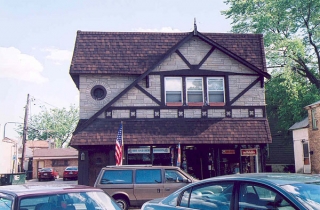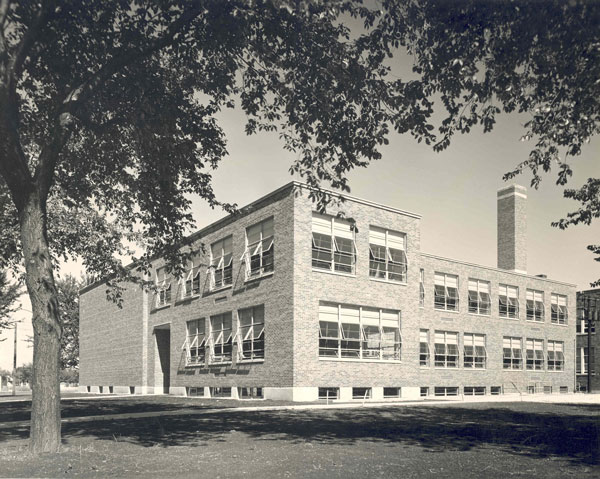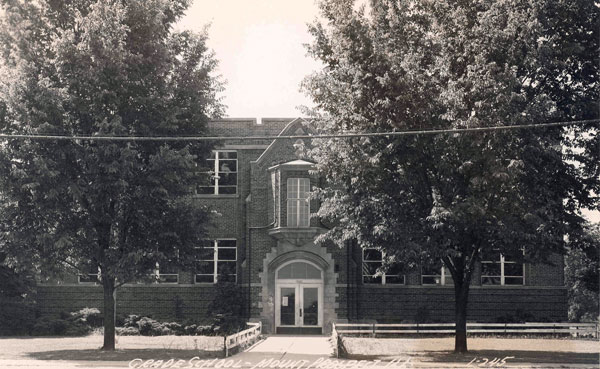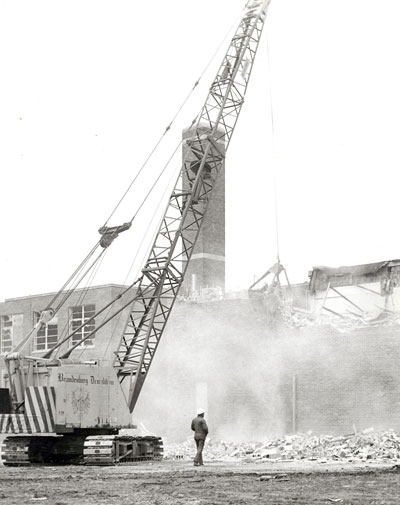Name of Building or Business: Meyn Grocery Store
Address: 19 W. Busse
Built: Circa 1925
Demolished: 2006
What is currently at that address: Nothing
William Meyn’s grocery store stood in this small half timber structure. William was one of the sons of John Meyn, the first blacksmith in Mount Prospect and the brother of Herman Meyn, the second blacksmith and the second Mayor of Mount Prospect. At one point, the entire triangular block bordered by Northwest Highway, Main Street and Busse Avenue belonged to the Meyn family. While the Meyn family is not as well known as the Busse family, they were a major force in the development of early Mount Prospect. John Meyn was born in Schleswig-Holstein and immigrated to America in 1882 at the age of 19. He worked as an assistant blacksmith in Arlington Heights for a year before he was persuaded by John C. Moehling, Mount Prospect’s first postmaster and owner of the general store, to move to Mount Prospect and open his own shop. He was the first blacksmith in town and ran the business for many years. Having a blacksmith shop was an early step towards development. When most transportation required horses, you needed to have someone who could shoe the horses and repair wagons in town if you expected the town to grow. This is why John Moehling went out of his way to persuade John Meyn to move to Mount Prospect and how the family became very influential in town.
William Meyn was the second oldest son of John Meyn and while his older brother followed his father in becoming a blacksmith, William decided to start his own business. He built this two-story building near his father’s shop, which also happened to be along the most developed stretch of downtown Mount Prospect. The store sold canned foods, breads, fresh meat, and some tools. The business ran for many years and was an institution in the early Mount Prospect. The building has since housed a number of other small businesses, most recently a barber shop.
